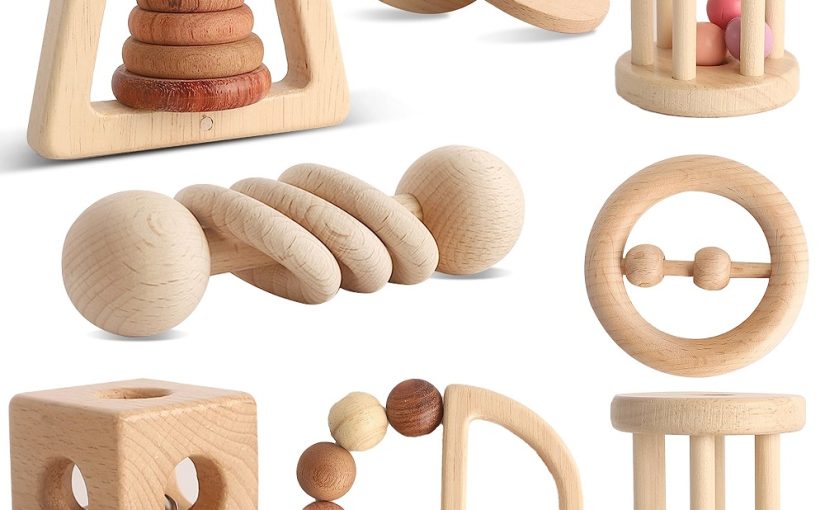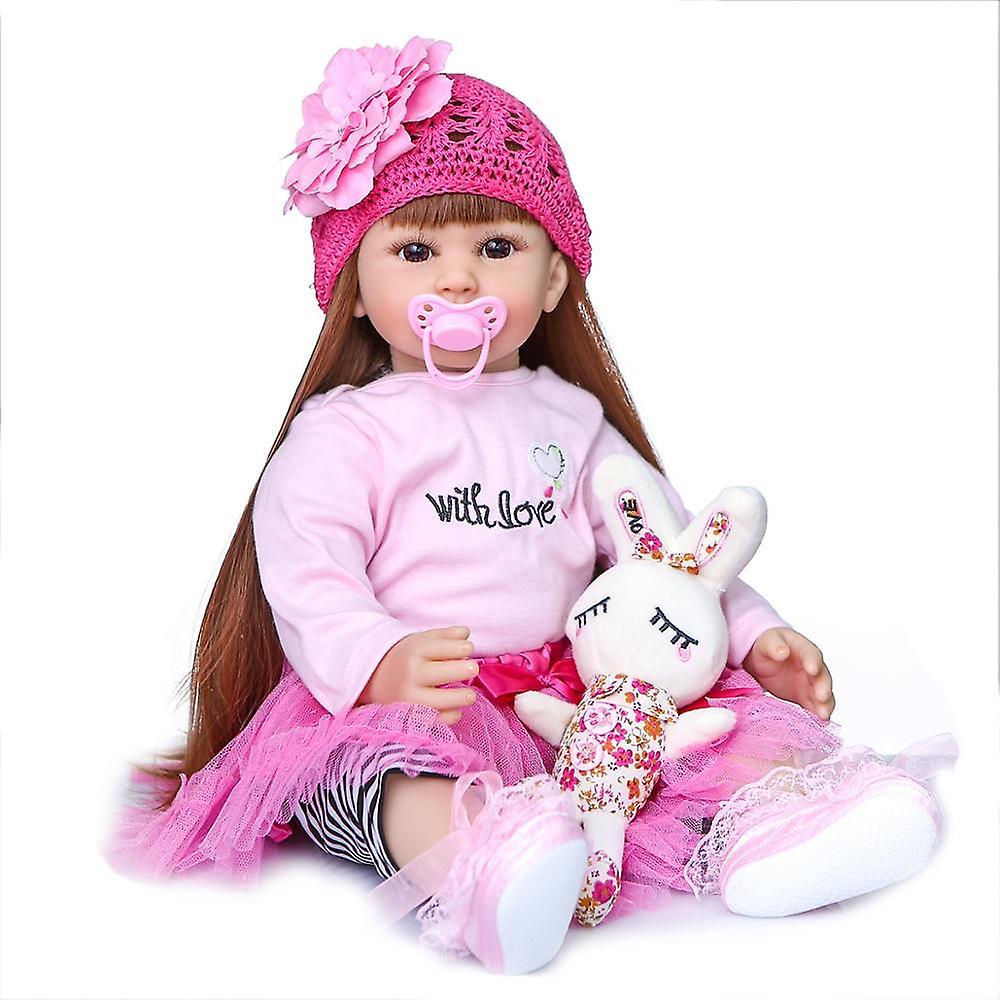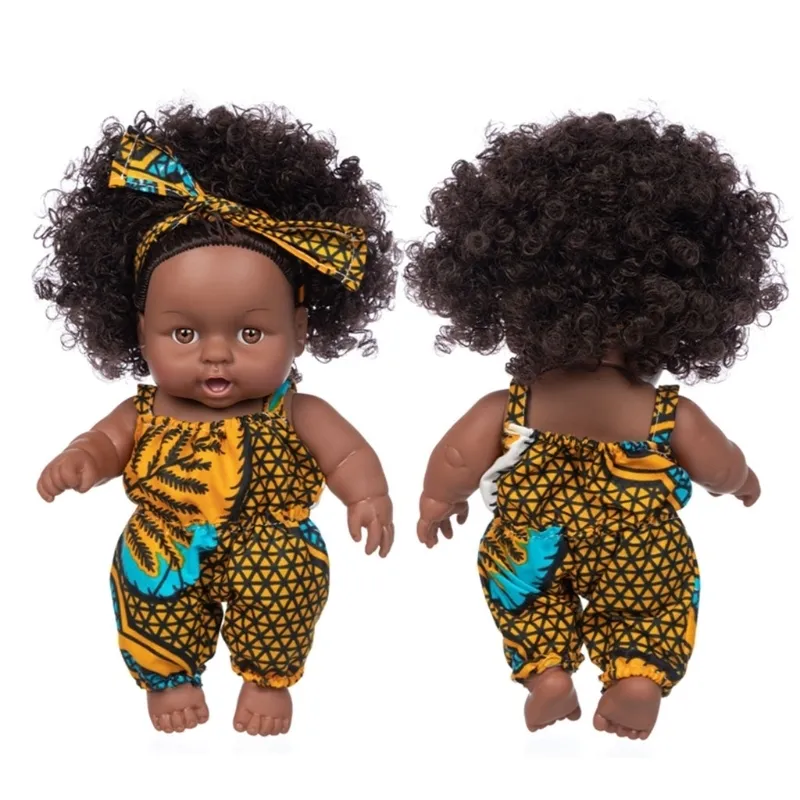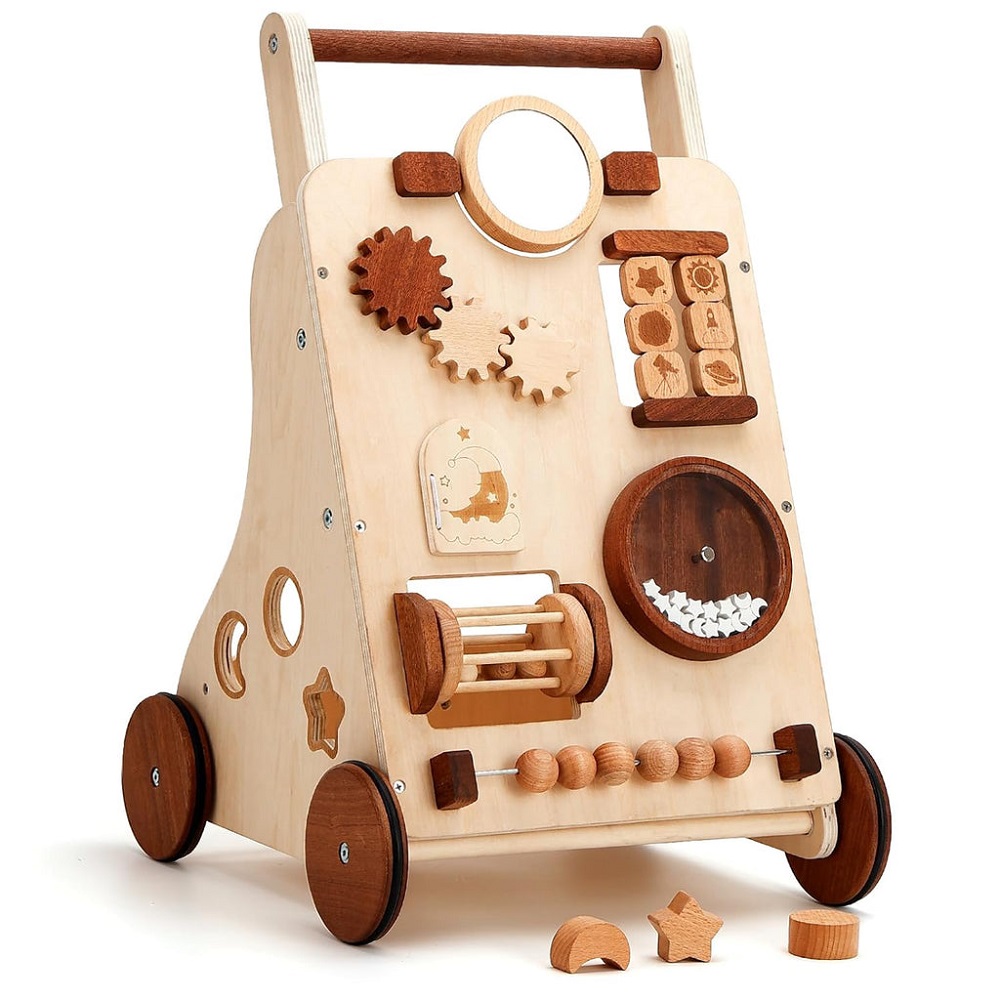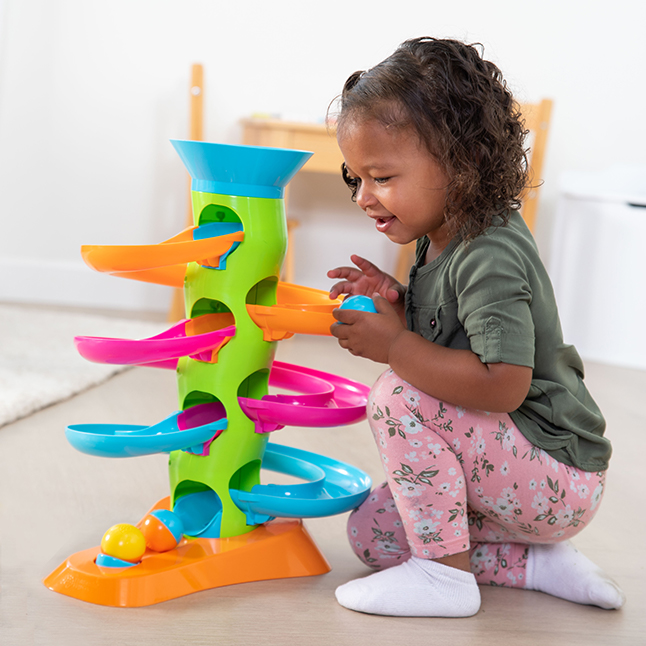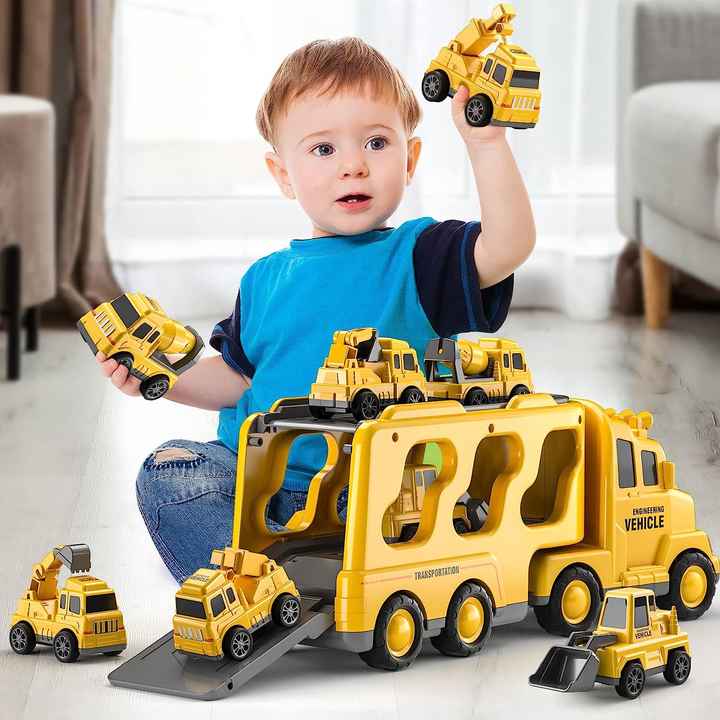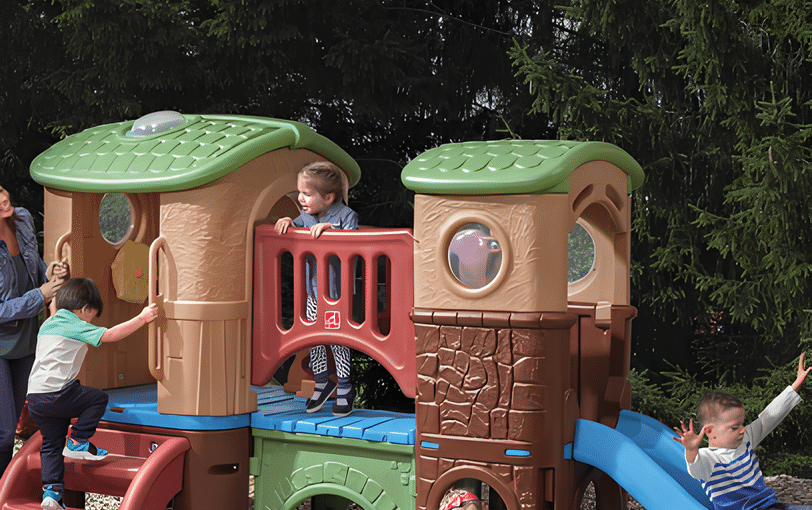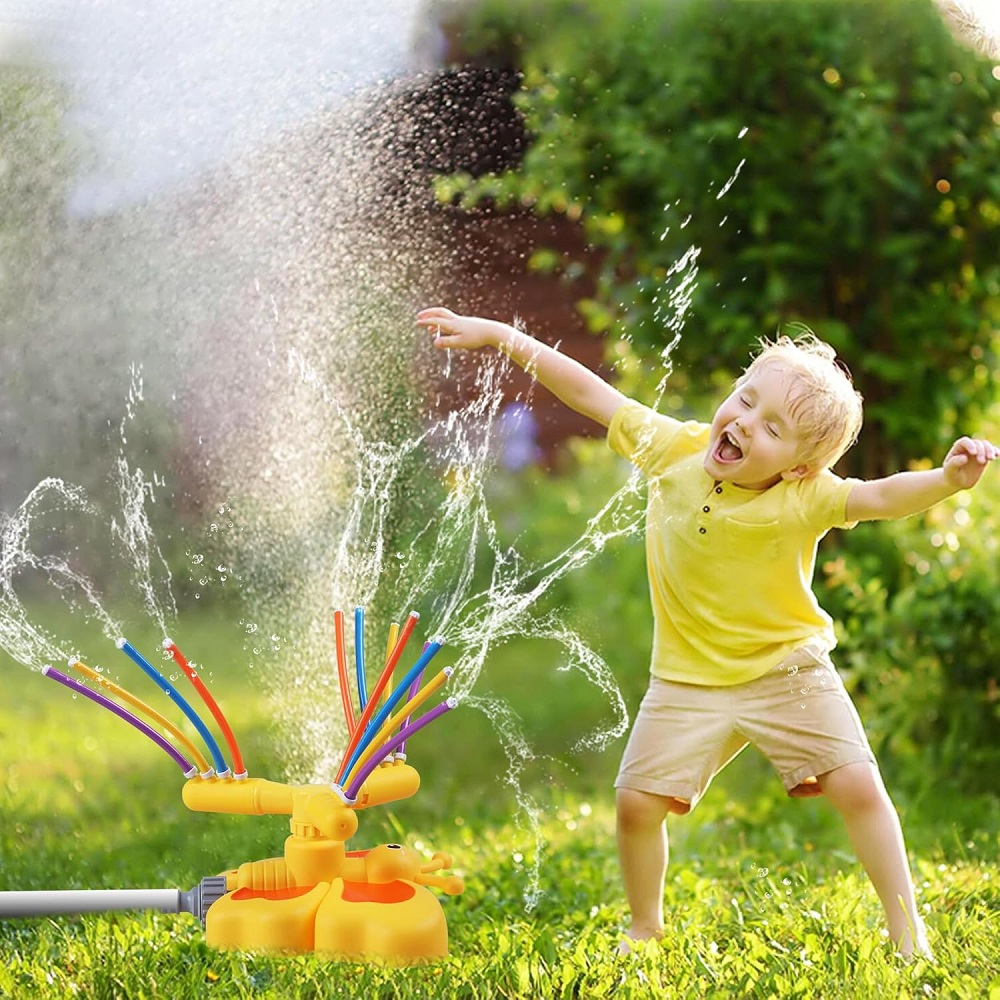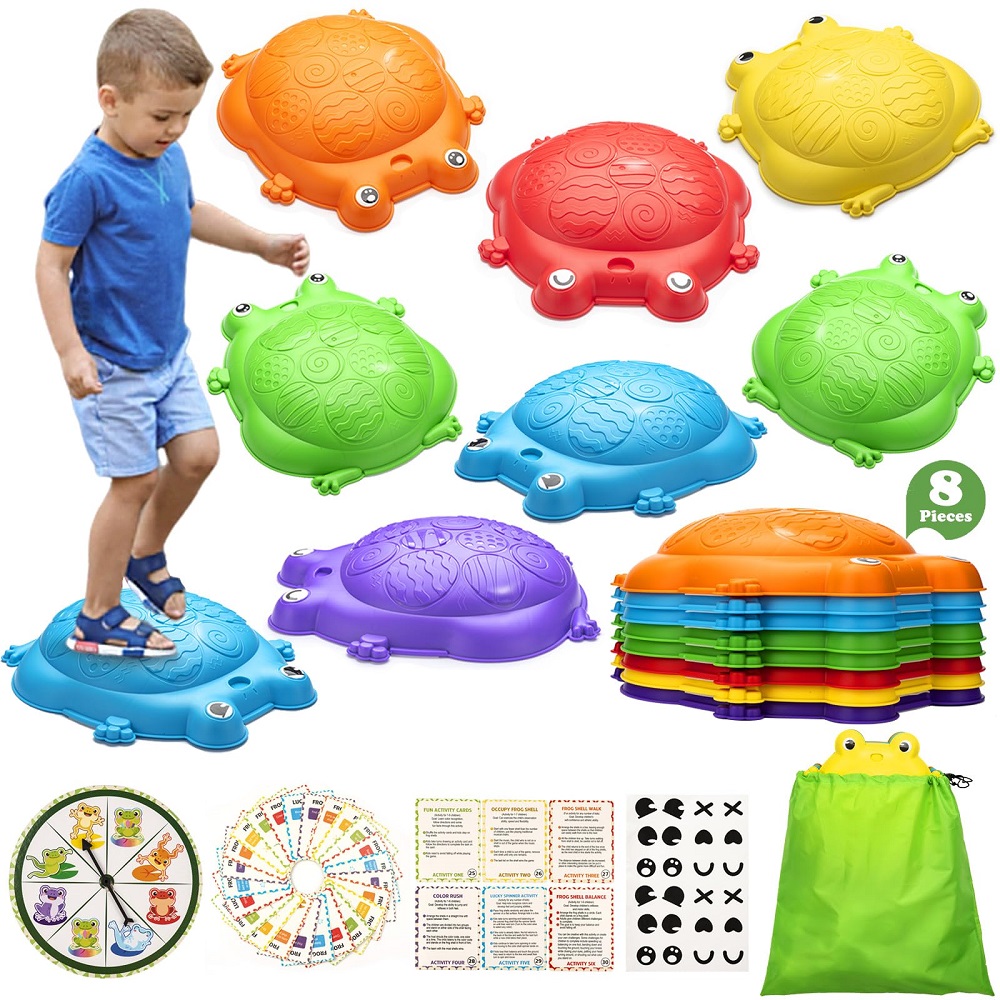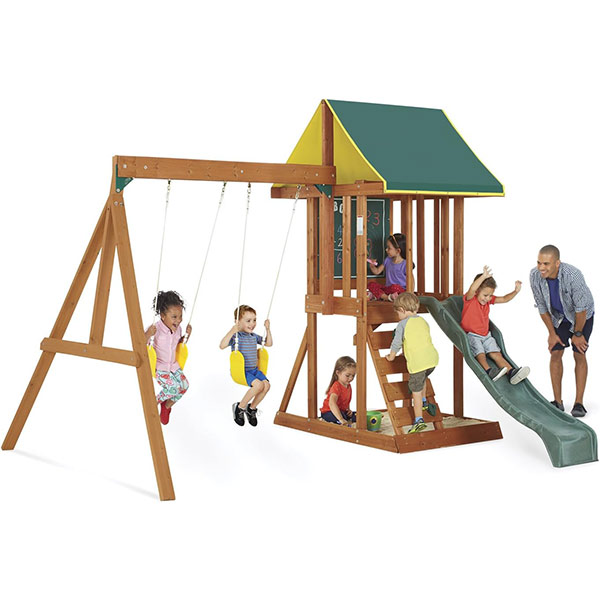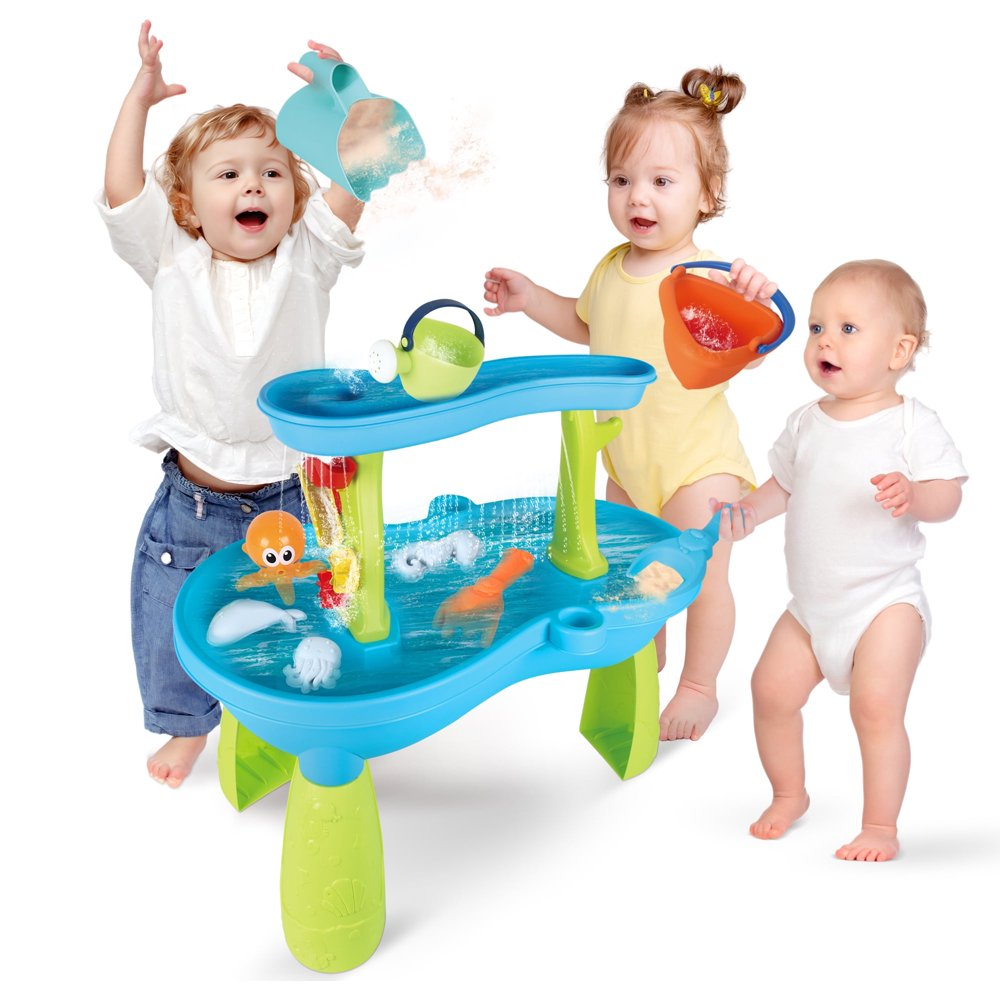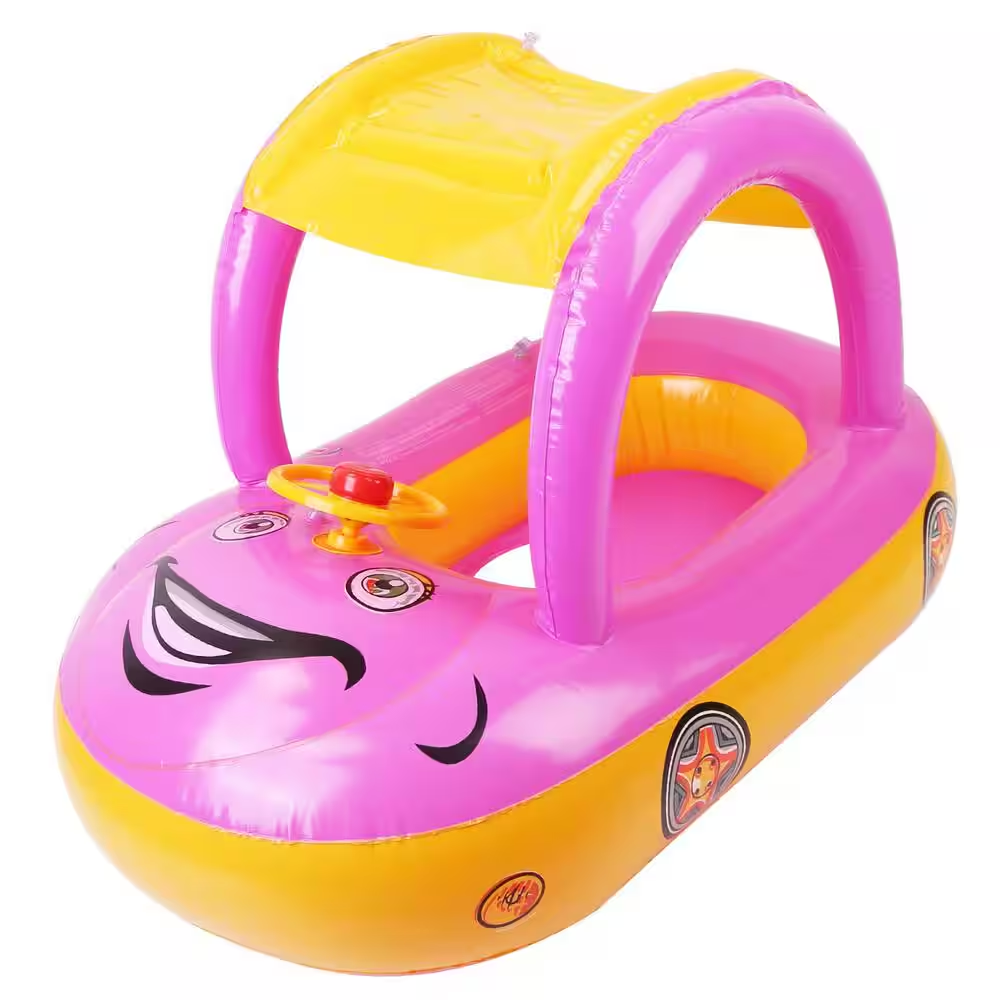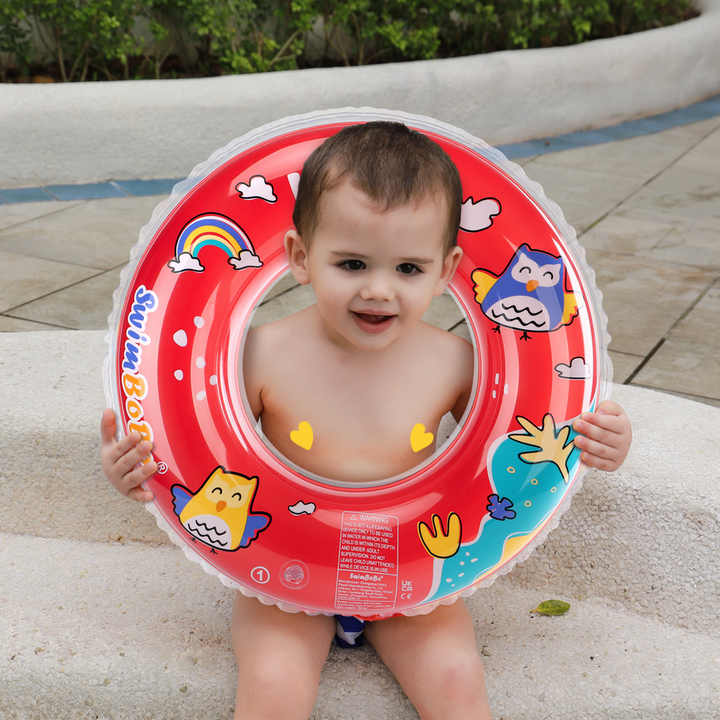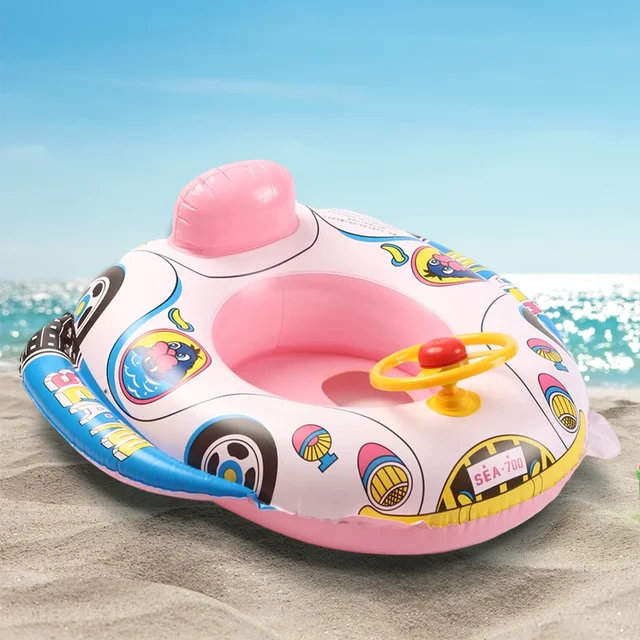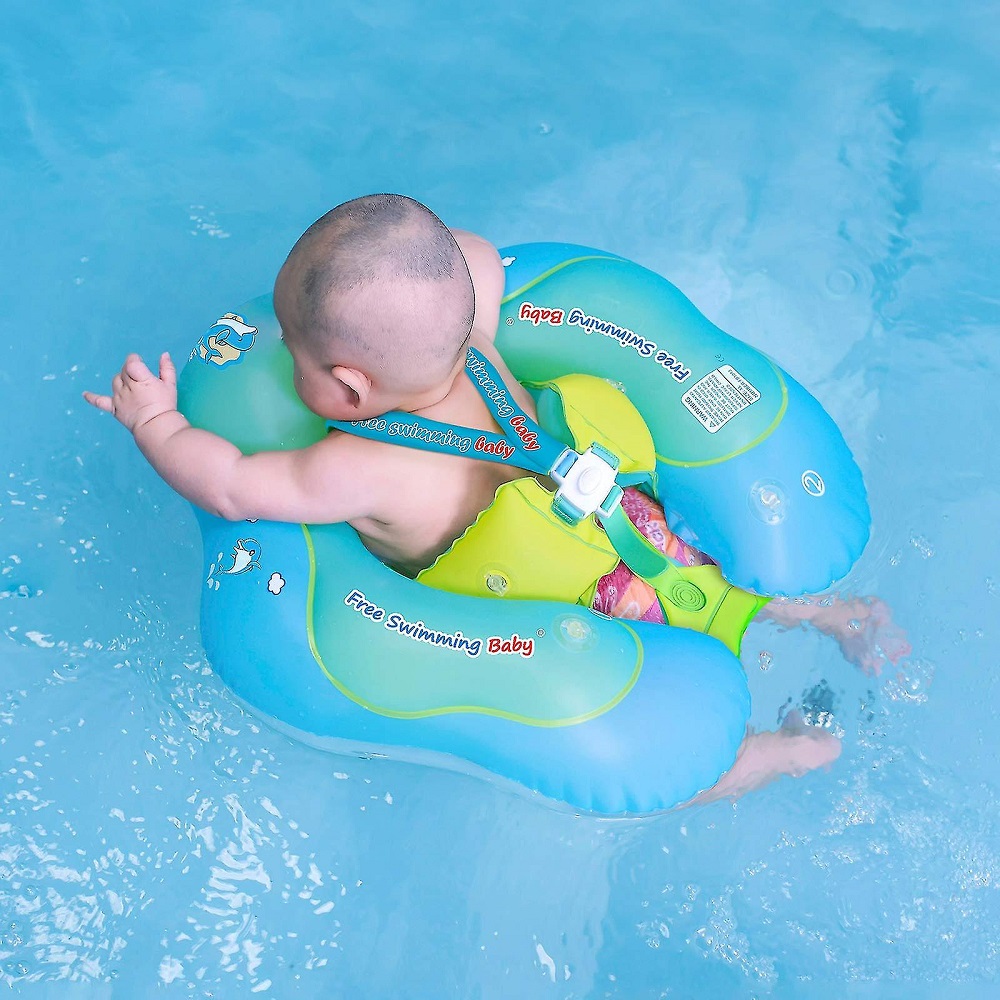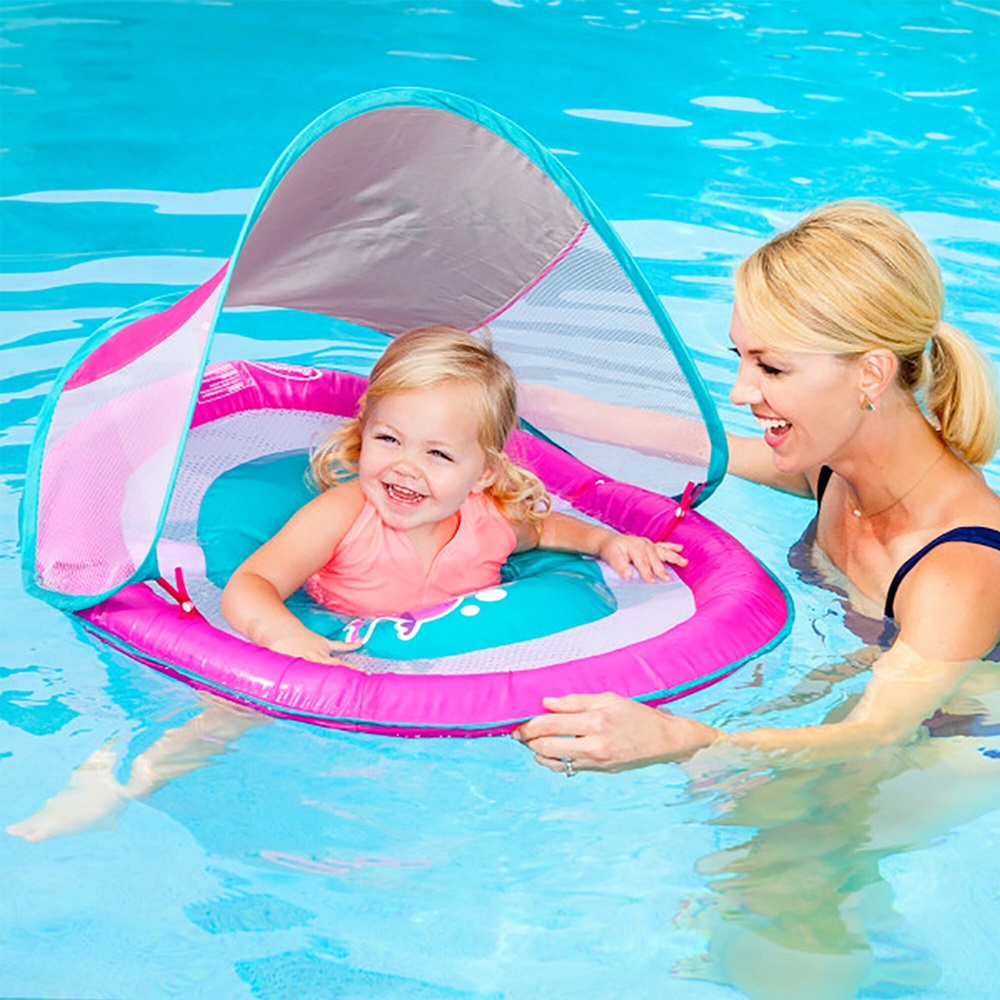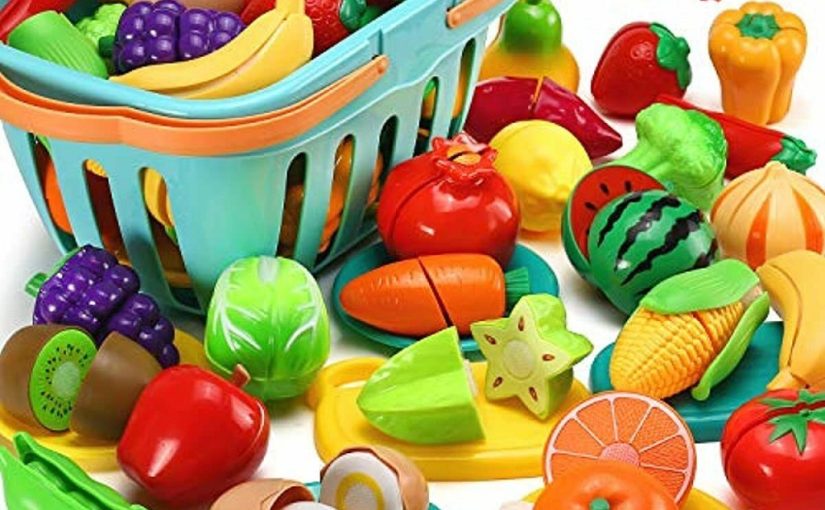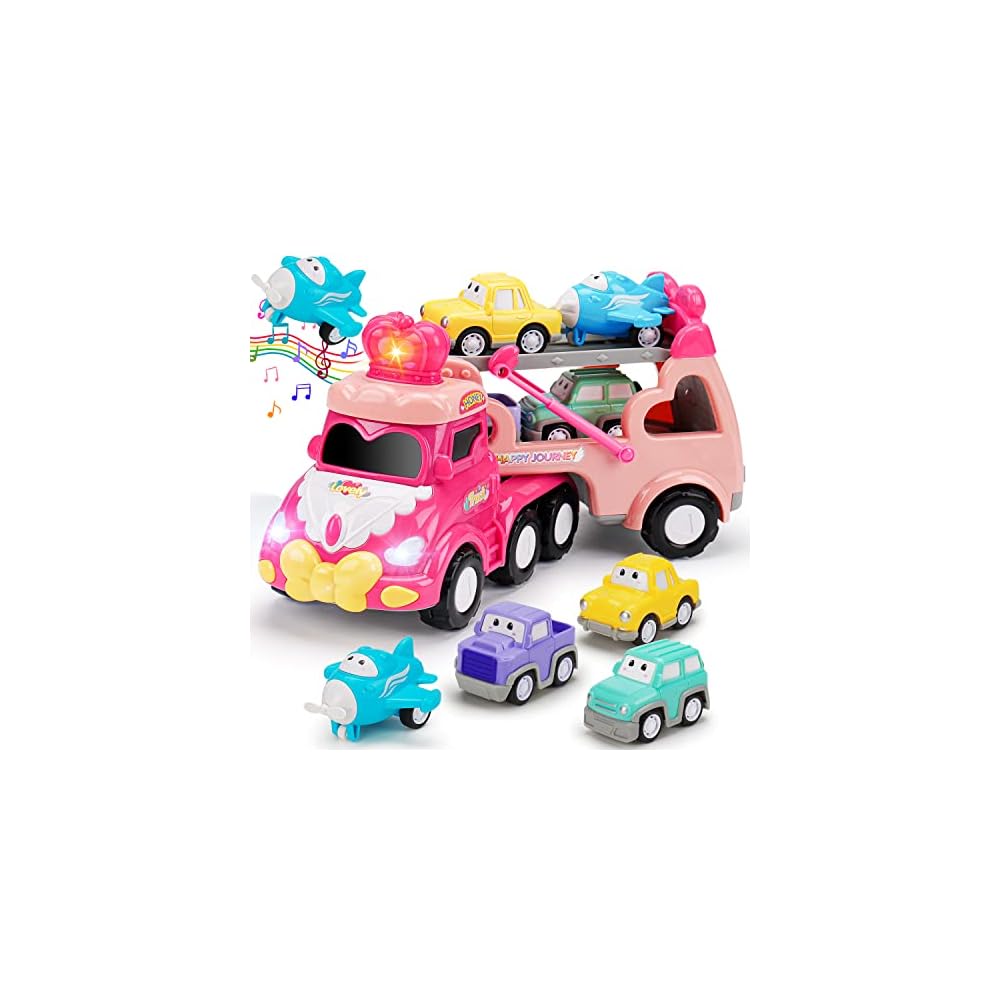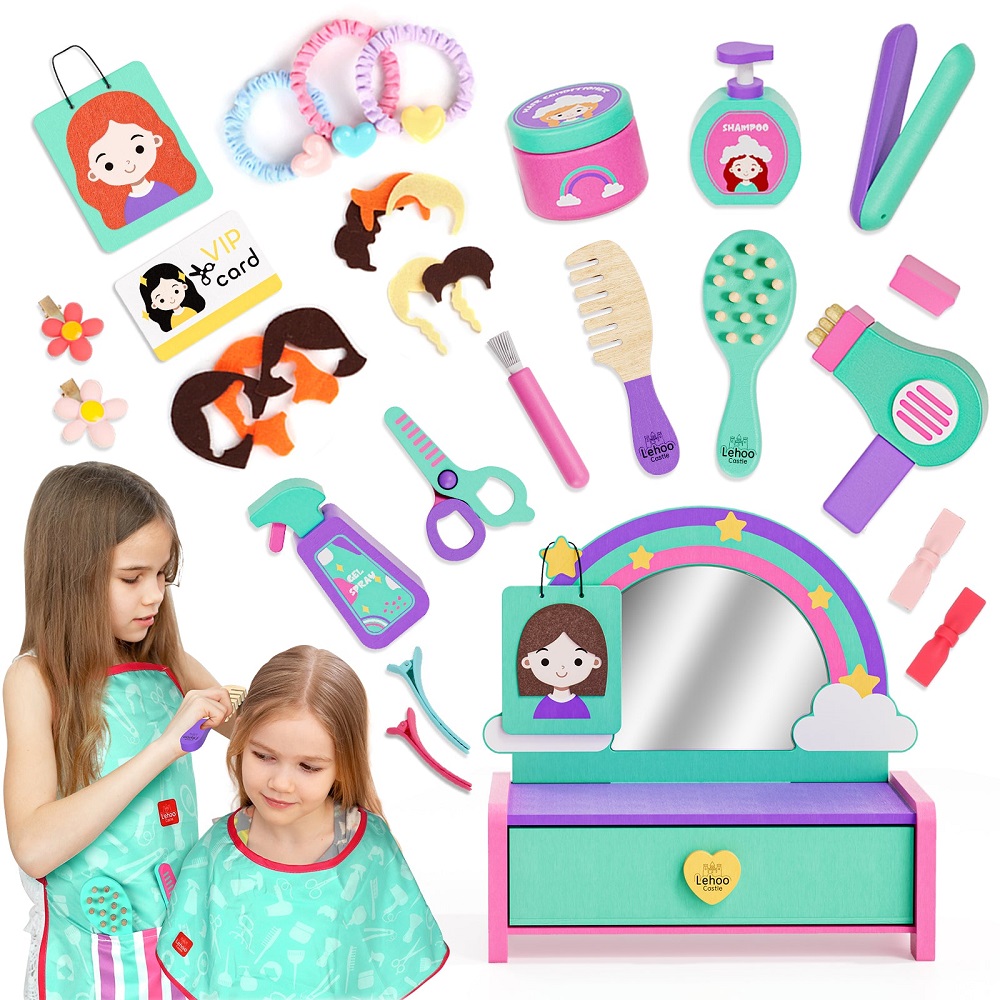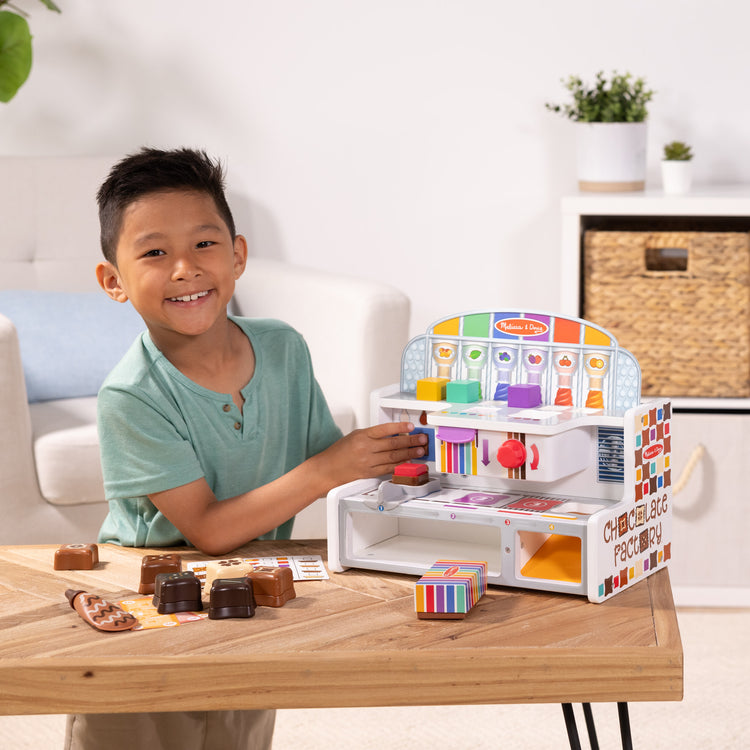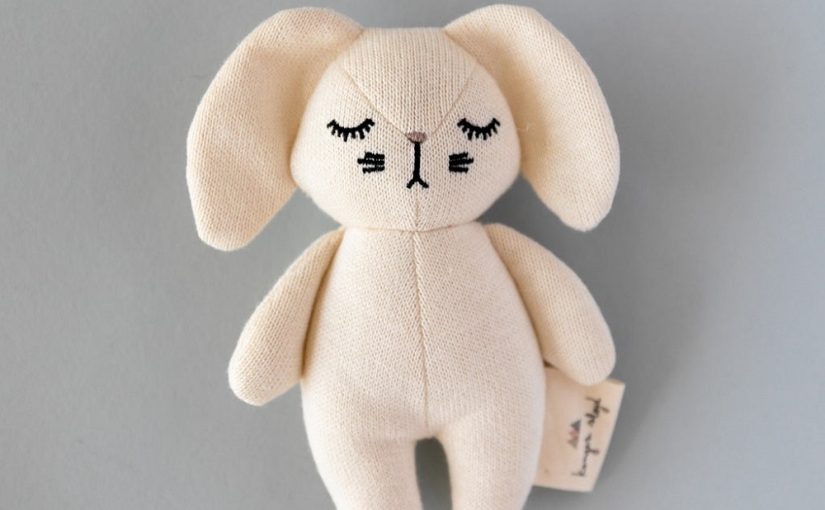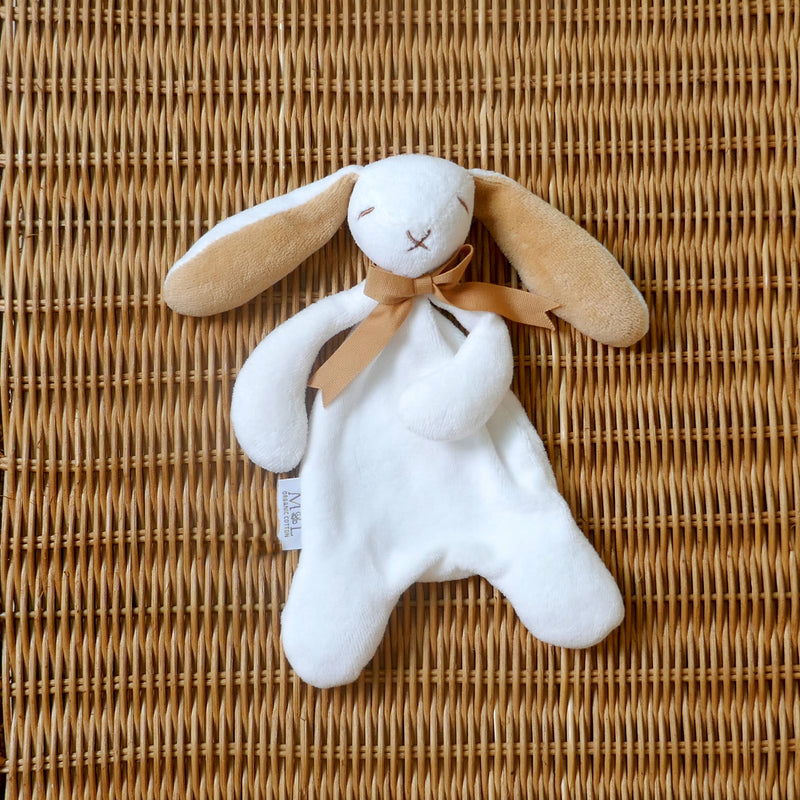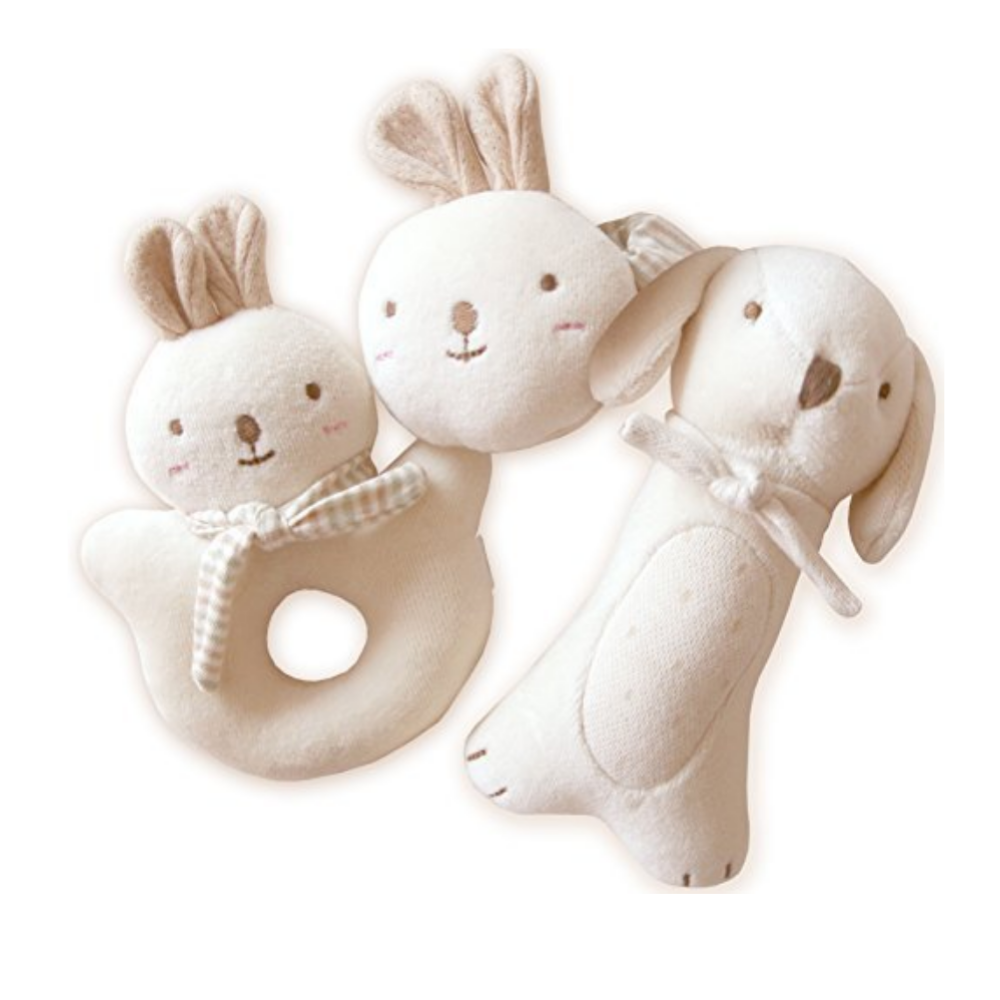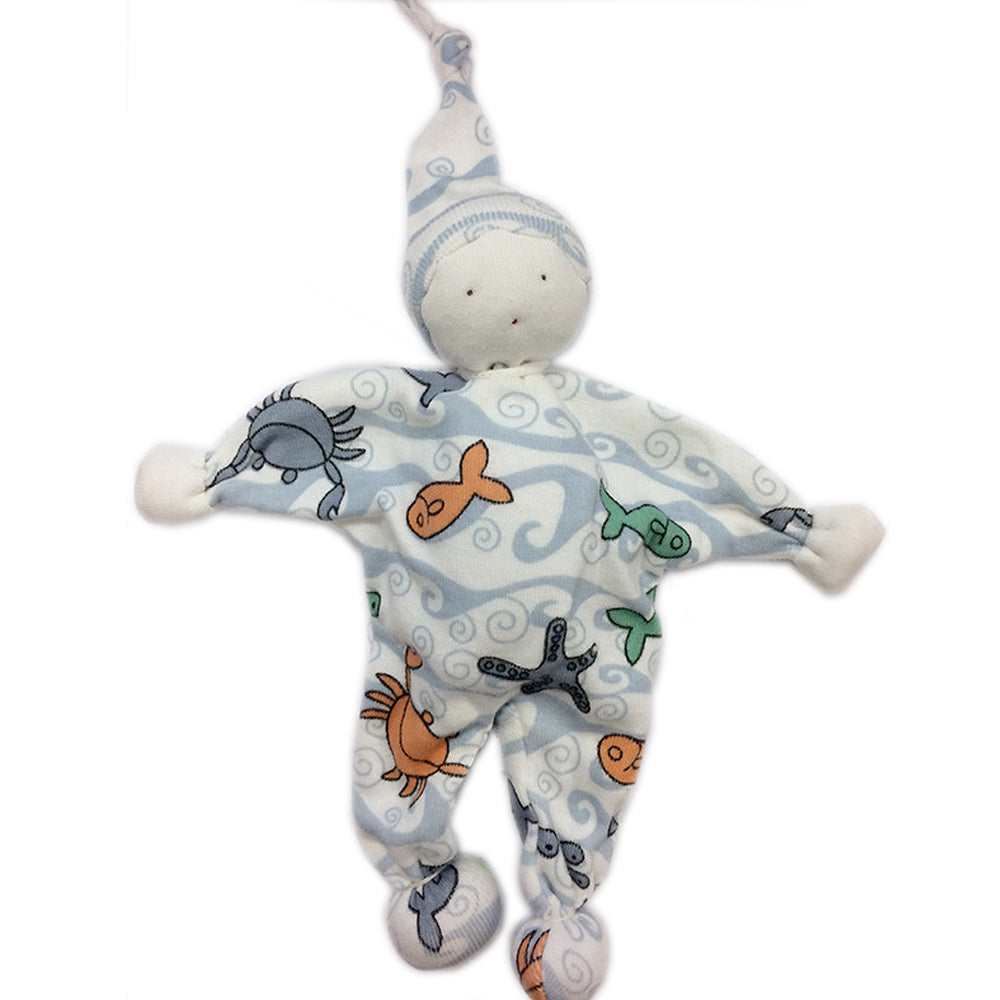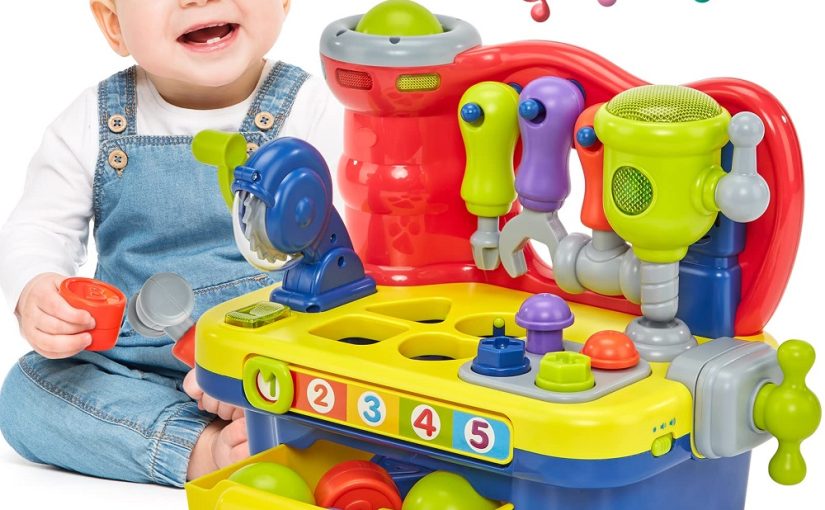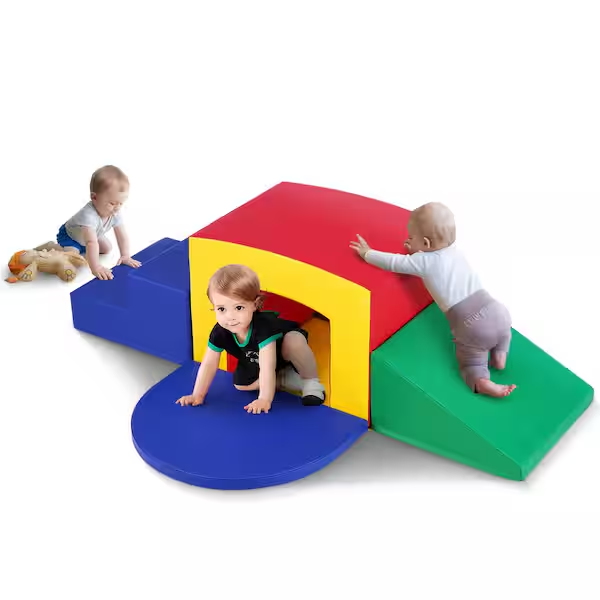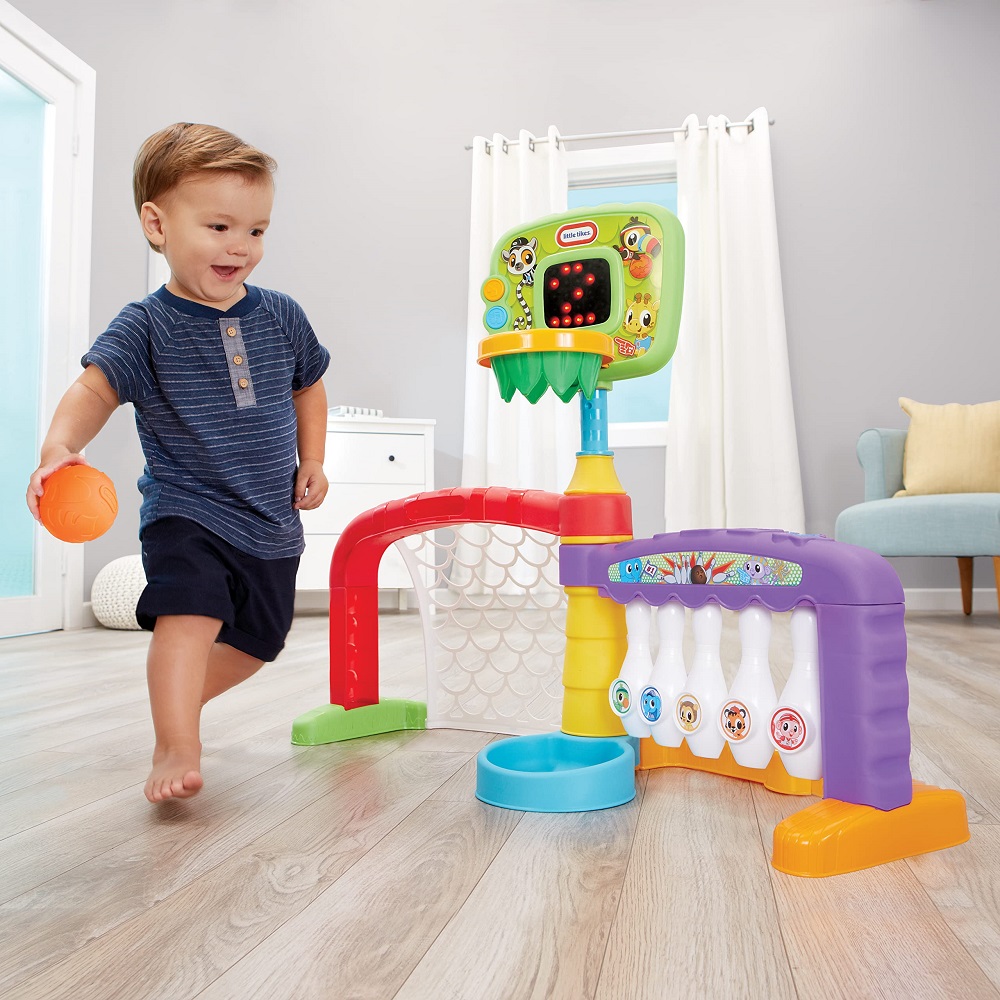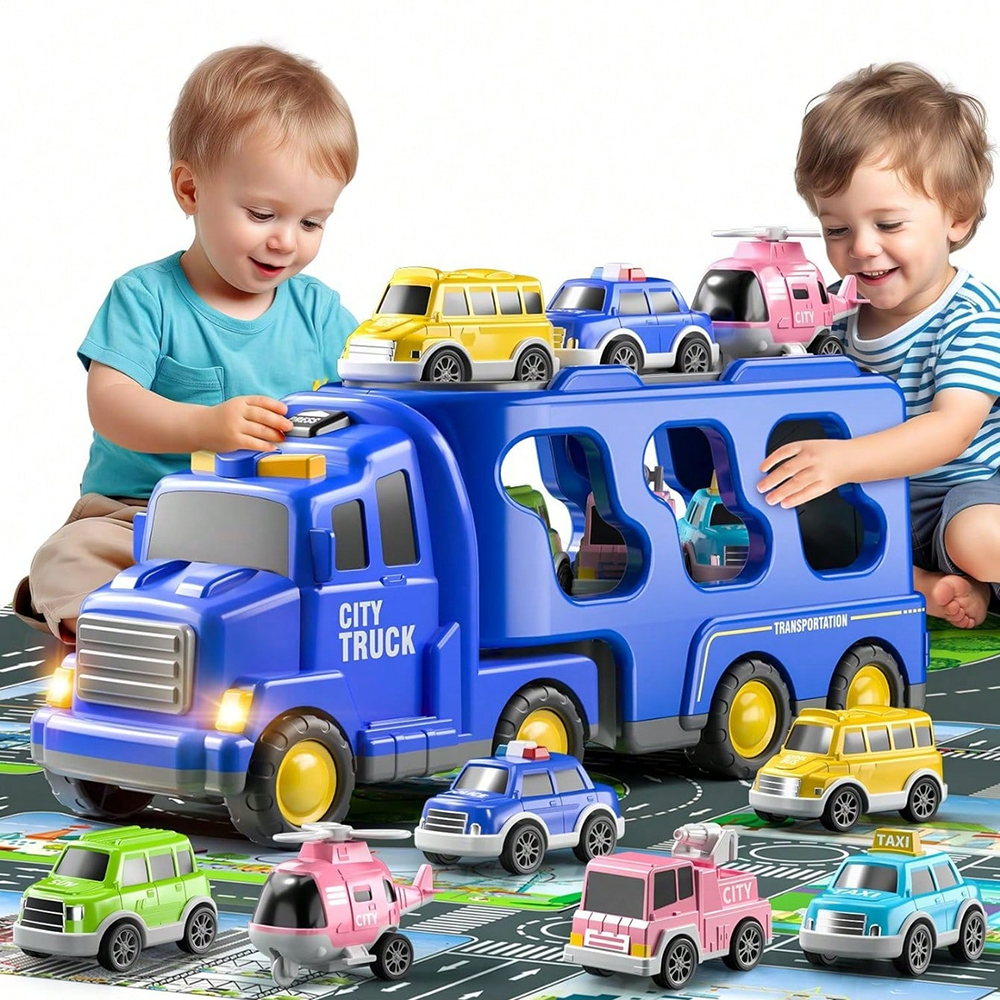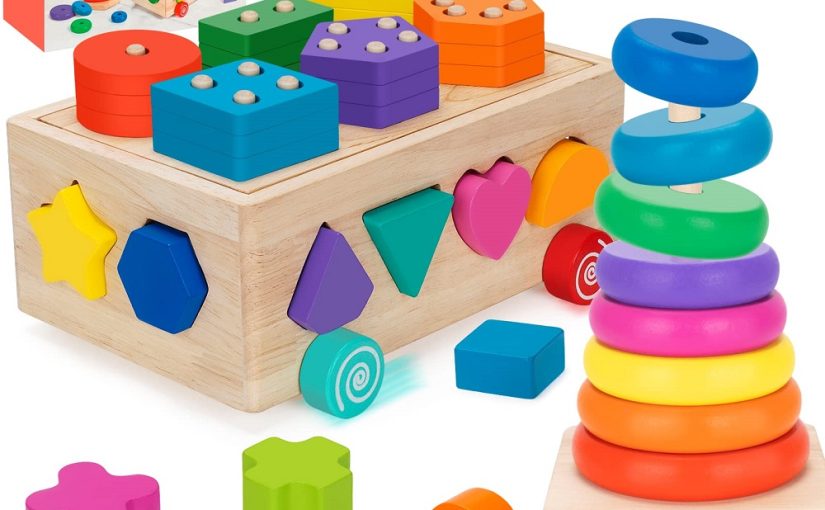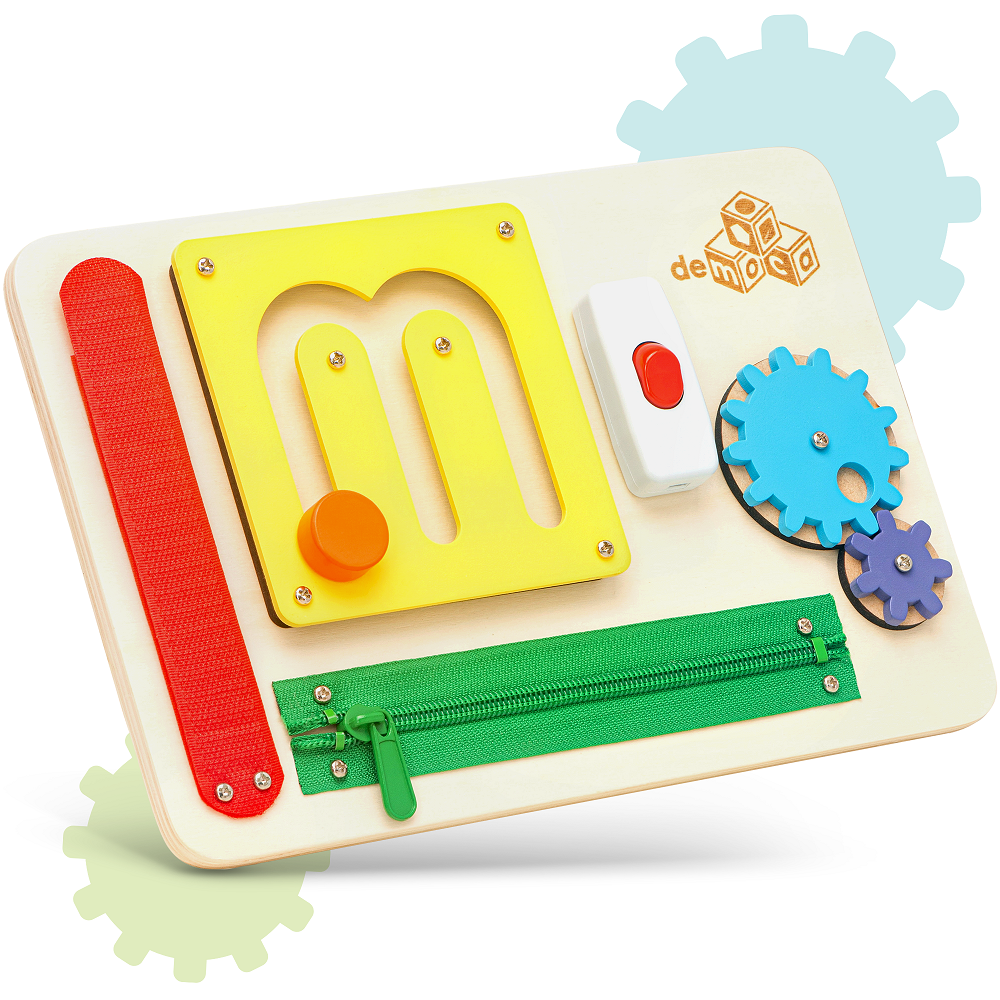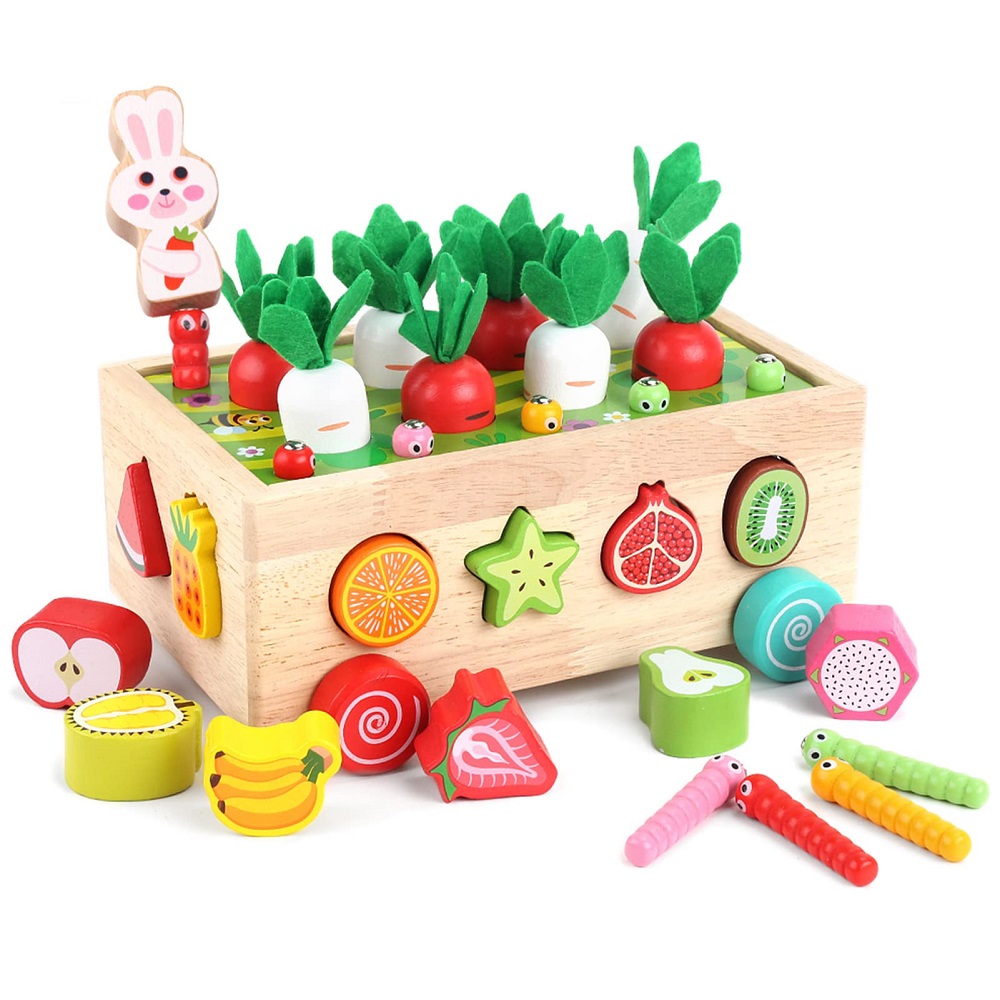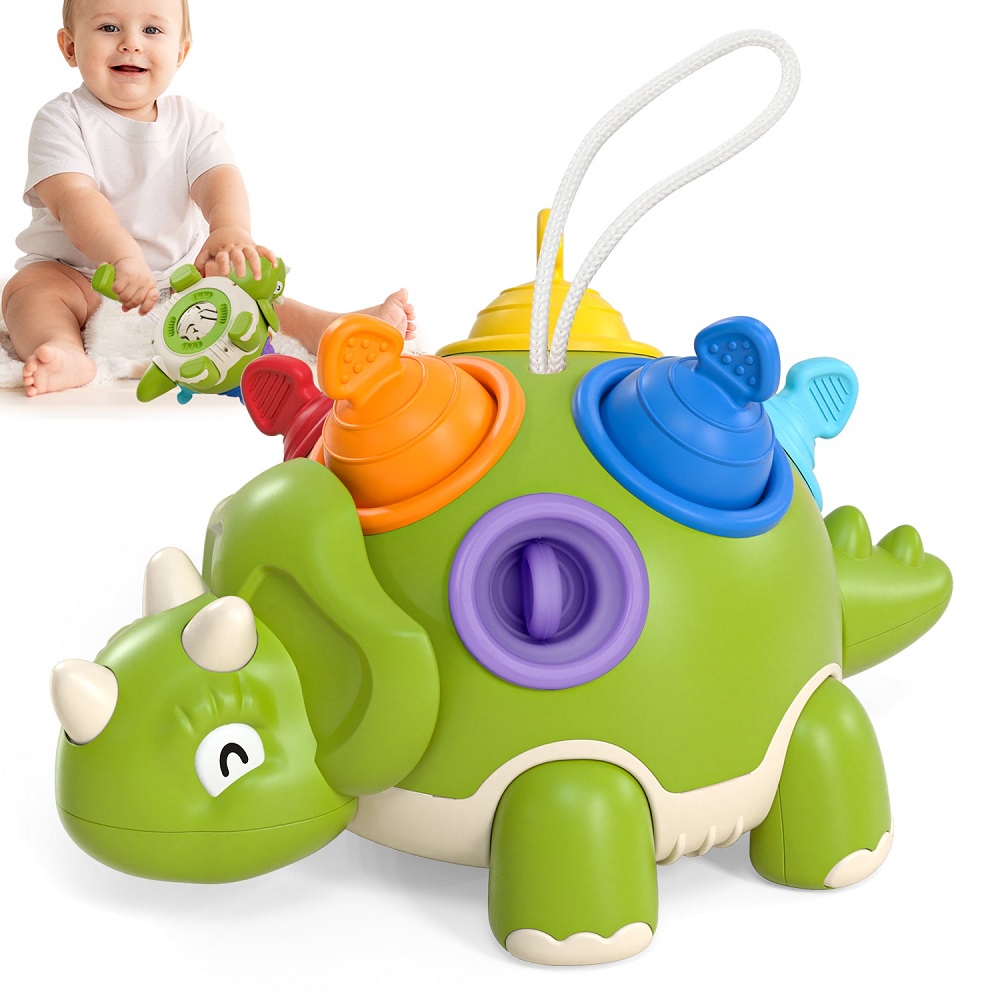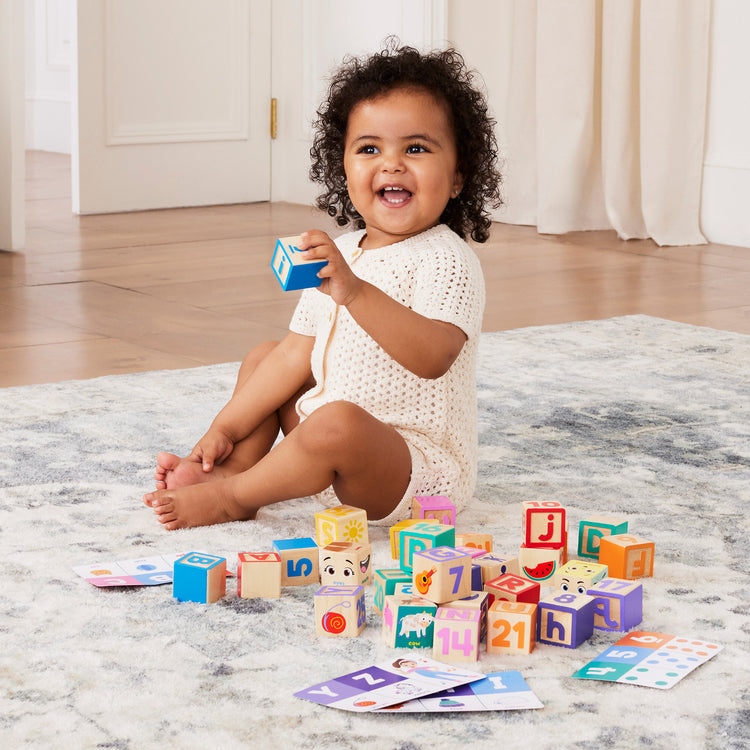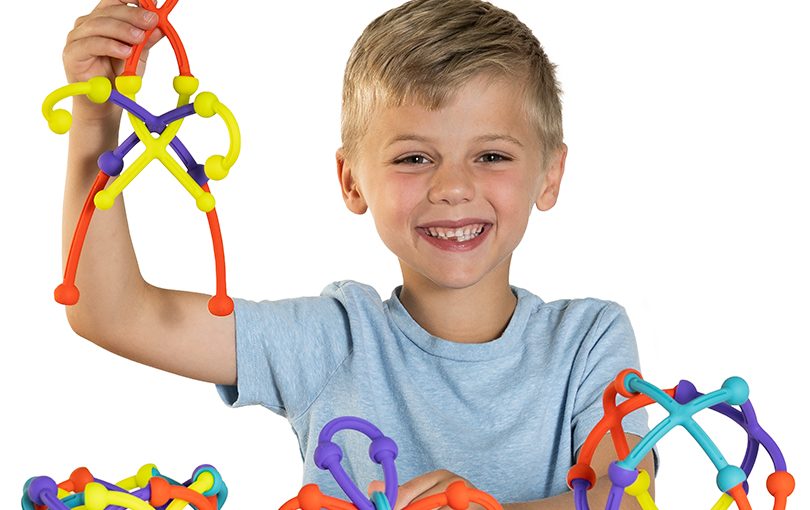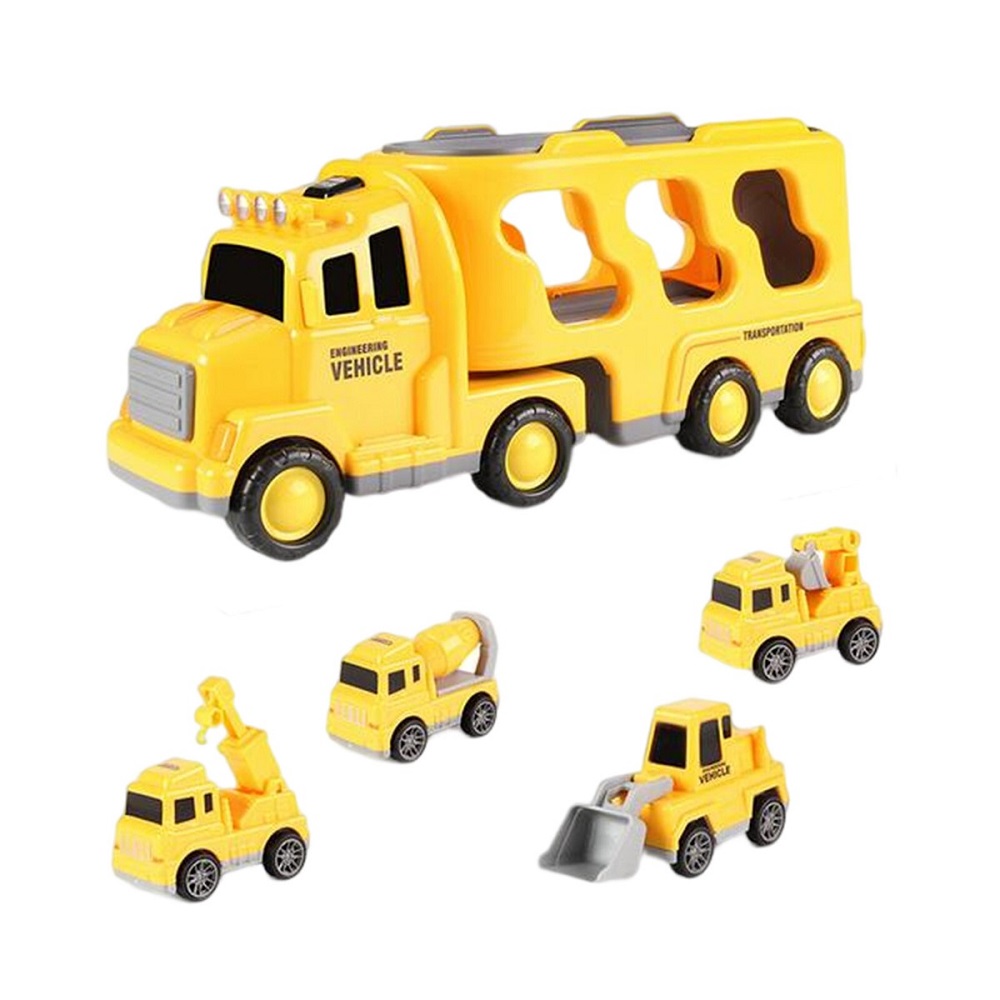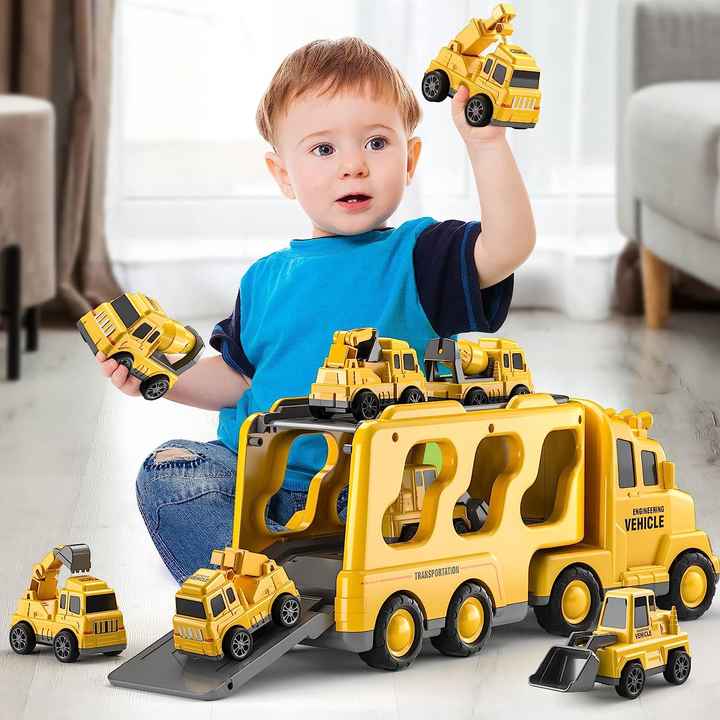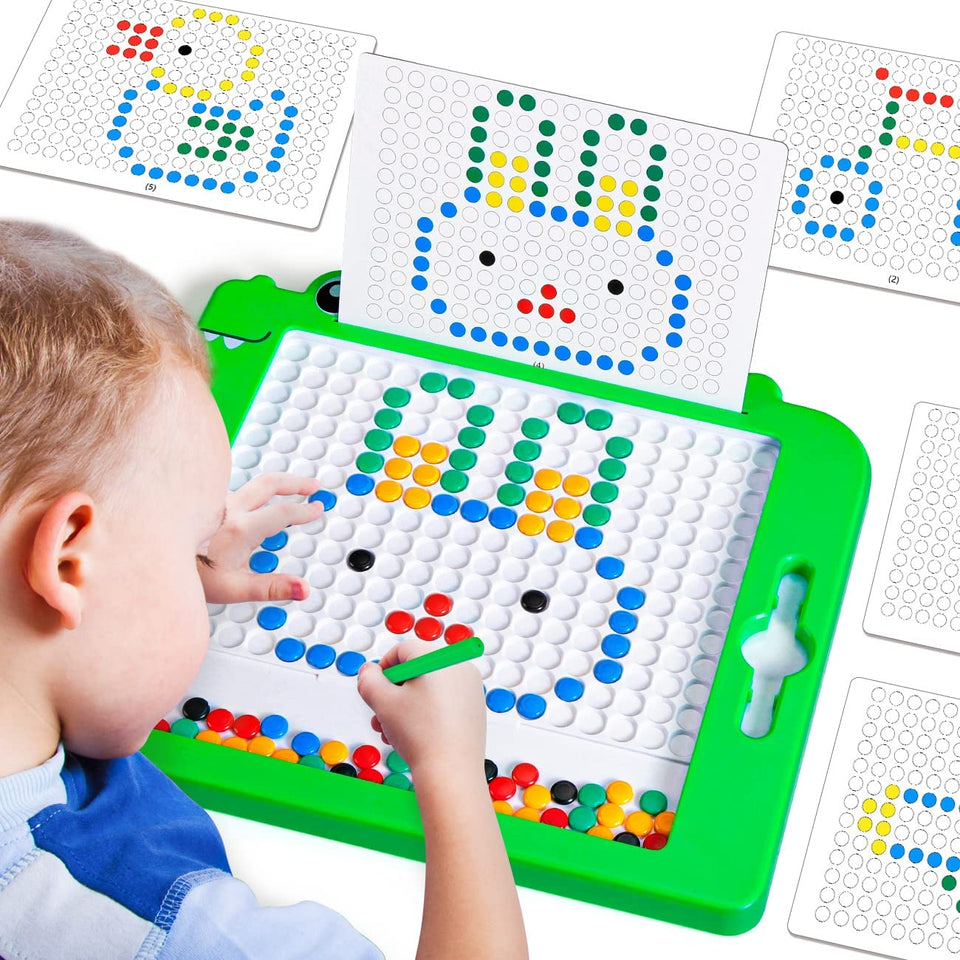Benefits of Wooden Toys for Babies
Wooden toys are a timeless choice for babies. They offer numerous advantages for both parents and children. From being safer to more sustainable, wooden toys for baby stand out as an excellent option. Below, we explore why wooden toys are beneficial in more detail.
Why Choose Wooden Toys Over Plastic?
Wooden toys for baby provide a natural alternative to plastic ones. They do not contain harmful chemicals like BPA or phthalates. Unlike plastic toys, wooden ones are more durable and less likely to break. Broken plastic toys can have sharp edges, posing a safety risk. Additionally, wooden toys often come with a smoother finish that is kinder to a baby’s delicate skin. Their timeless design also makes them a lasting keepsake.
Babies engage better with wooden toys because of their more realistic textures. These toys encourage sensory exploration, supporting developmental milestones. Their simple designs inspire imaginative thinking, unlike mass-produced plastic toys that may limit creativity.
Environmental and Health Advantages of Wooden Toys
Wooden toys are eco-friendly and biodegradable. They are often made from sustainably sourced wood, reducing environmental impact. Many manufacturers also use ethical practices in producing wooden toys. Plastic toys contribute to landfills and pollution, while wooden ones break down naturally.
Health benefits are also significant. Wooden toys are made with non-toxic paints and coatings, ensuring they are safe for babies who may chew on them. They have fewer chances of causing skin irritations or allergies compared to synthetic toys. Choosing wooden toys aligns with creating a safer and cleaner world for future generations.
By selecting wooden toys, parents can ensure health, safety, and environmental benefits for their babies. Their charm, durability, and safety make them worth considering.

Safety Features to Look for in Wooden Baby Toys
When choosing wooden toys for your baby, safety should be a top priority. Not all wooden toys are made equal; some may pose risks if not properly crafted or finished. Below are the key safety features to watch for.
Importance of Non-Toxic Materials in Wooden Toys
Always ensure the wooden toy uses non-toxic materials. Babies often put toys in their mouths. Non-toxic paints, varnishes, or finishes prevent harmful chemical exposure. Avoid toys with toxic adhesives or synthetic coatings. Look for products labeled “BPA-free,” “lead-free,” or “phthalate-free.” Opting for safe materials ensures your baby’s health is protected.
Certifications and Safety Standards
Certified toys meet global safety standards, offering extra peace of mind. Look for certifications such as ASTM, EN71, or CPSIA compliance. These standards ensure toys are free from harmful substances and meet structural safety guidelines. Some certifications also cover sustainability, which is an added benefit. Always check labels or product information for these certifications.
Avoiding Small Parts and Choking Hazards
Small parts can pose serious choking risks for babies. Wooden toys should be large and solid enough to avoid breaking or detaching. Avoid toys with easily removable pieces or sharp edges. Check the manufacturer’s recommended age range to ensure suitability. Regularly inspect toys for wear and tear that could create hazards. By prioritizing well-crafted and appropriately sized toys, you can greatly reduce the risk of choking accidents.
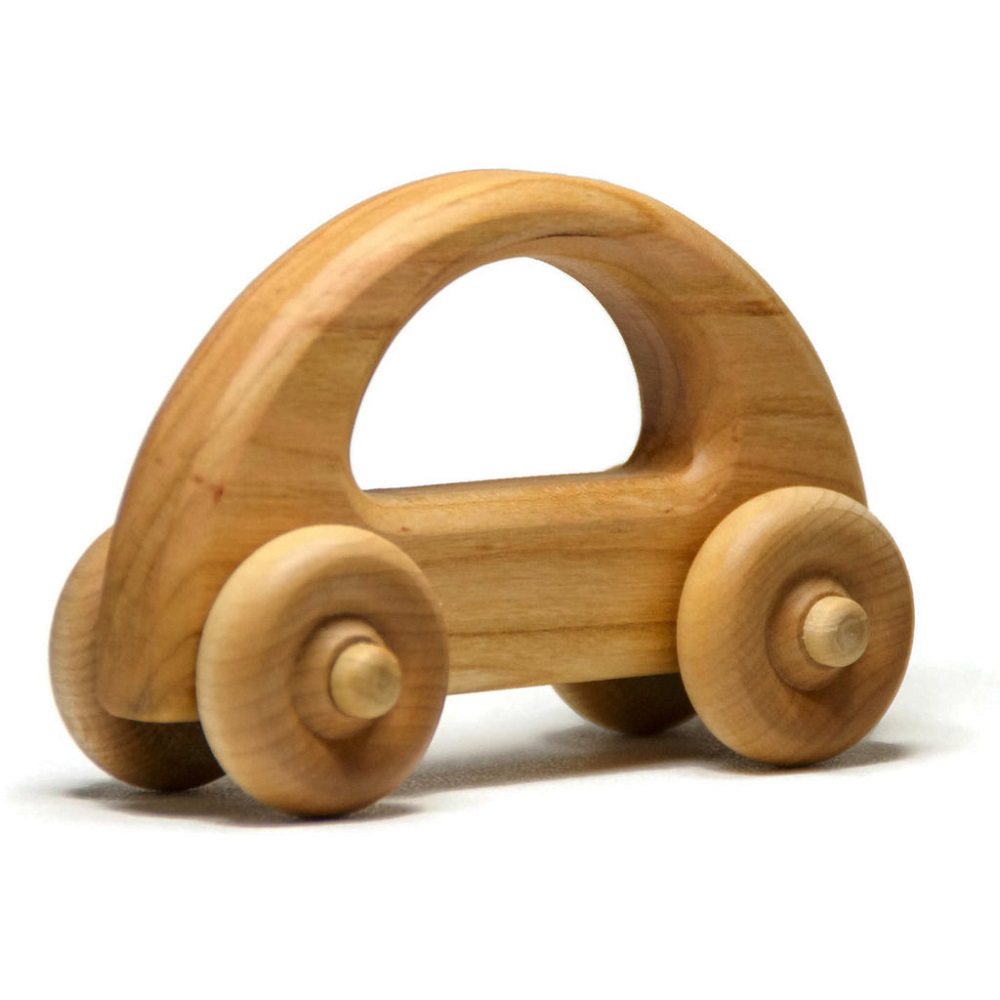
Types of Wooden Toys Suitable for Babies
Choosing the right type of wooden toy is essential for your baby’s development and safety. Wooden toys come in various designs that cater to different age groups and learning stages. Here are some highly suitable options.
Wooden Rattles and Teethers
Wooden rattles and teethers are ideal for infants. They are safe for chewing and soothe teething discomfort. These toys are often crafted from non-toxic and smooth wood, making them gentle on gums. Their simple shapes and light weight allow easy handling by small hands. Many feature engaging sounds and textures to keep babies entertained.
Montessori-Inspired Wooden Toys
Montessori-style wooden toys focus on learning through play. These toys encourage problem-solving skills and independence. Examples include wooden puzzles, pegboards, and stacking rings. Their minimalist design fosters creativity and concentration. Safe materials ensure these toys remain appropriate for babies to explore safely.
Stacking Toys and Shape Sorters
Stacking toys and shape sorters offer interactive fun for toddlers. They support motor skills and hand-eye coordination. Wooden stacking toys typically feature smooth finishes and vibrant colors, engaging babies visually. Shape sorters help babies learn about shapes, sizes, and spatial awareness. Both types encourage curiosity and logical thinking.
Wooden toys, like rattles, shape sorters, and Montessori-inspired designs, are versatile and impactful. Opting for these toys ensures safety, creativity, and developmental benefits for your baby.

Tips for Choosing the Right Wooden Toys for Your Baby
Selecting suitable wooden toys for your baby requires thoughtful consideration. The right toys ensure safety, fun, and developmental growth. Below are some key factors to guide your choice.
Age-Appropriate Wooden Toy Selection
Choose toys that fit your baby’s age and developmental stage. For newborns, select simple toys like rattles and teethers. These are easy to grasp and safe to chew. For toddlers, consider interactive options like stacking toys or shape sorters. These help improve motor skills and problem-solving abilities. Always check age labels on toys to ensure suitability.
Considering Durability and Craftsmanship
Look for wooden toys made with sturdy and high-quality materials. Well-crafted toys last longer and resist damage. Smooth finishes protect delicate skin and prevent splinters. Avoid toys with weak joints or sharp edges. High durability ensures that toys can be safely shared or passed down over time. Paying attention to craftsmanship guarantees safety and longevity for your baby.
Engaging and Stimulating Toys for Development
Select toys that stimulate your baby’s senses and mind. Bright colors, interesting textures, and interactive designs are ideal. Choose toys like puzzles or Montessori-inspired options for problem-solving practice. Stacking toys improve hand-eye coordination and creativity. Stimulating toys encourage curiosity and support essential developmental milestones. These toys make playtime both fun and educational for your baby.
How to Maintain and Clean Wooden Toys
To ensure the longevity and safety of wooden toys, proper maintenance and cleaning are essential. Following simple care instructions not only keeps these toys looking beautiful but also ensures they remain safe for your baby to use. Below are practical tips for maintaining wooden toys.
Safe Cleaning Methods for Wooden Toys
- Use a Damp Cloth: Wipe wooden toys with a damp cloth to clean dirt and stains. Avoid soaking or submerging them in water.
- Mild Soap: Use a small amount of mild, non-toxic soap if needed. Rinse thoroughly before drying.
- Air Dry: Let toys air dry completely to prevent moisture damage and warping.
- Avoid Harsh Chemicals: Do not use bleach or harsh cleaning liquids, as they can damage the wood and pose health risks.
- Sanitize Safely: For deeper cleaning, mix vinegar and water. Apply gently, then dry thoroughly.
Protecting Wooden Toys from Wear and Damage
- Avoid Extreme Temperatures: Keep wooden toys away from heaters and direct sunlight to prevent cracking or warping.
- Oil Treatment: Apply natural oils like linseed oil to maintain shine and prevent dryness.
- Check for Damage: Inspect toys regularly for splinters, cracks, or loose parts. Repair or discard damaged toys promptly.
- Use Toys Properly: Teach older children not to misuse toys, ensuring they last longer.
Storage Tips for Longevity
- Store in a Dry Area: Keep toys in a dry space to prevent mold and moisture damage.
- Use Containers: Store wooden toys in boxes or baskets to protect them from dust.
- Organize by Type: Separate toys by category for easier access and better organization.
- Avoid Heavy Pressure: Don’t stack heavy objects on top of toys to prevent deformation.
Maintaining and cleaning wooden toys ensures they remain safe, durable, and visually appealing for years to come.
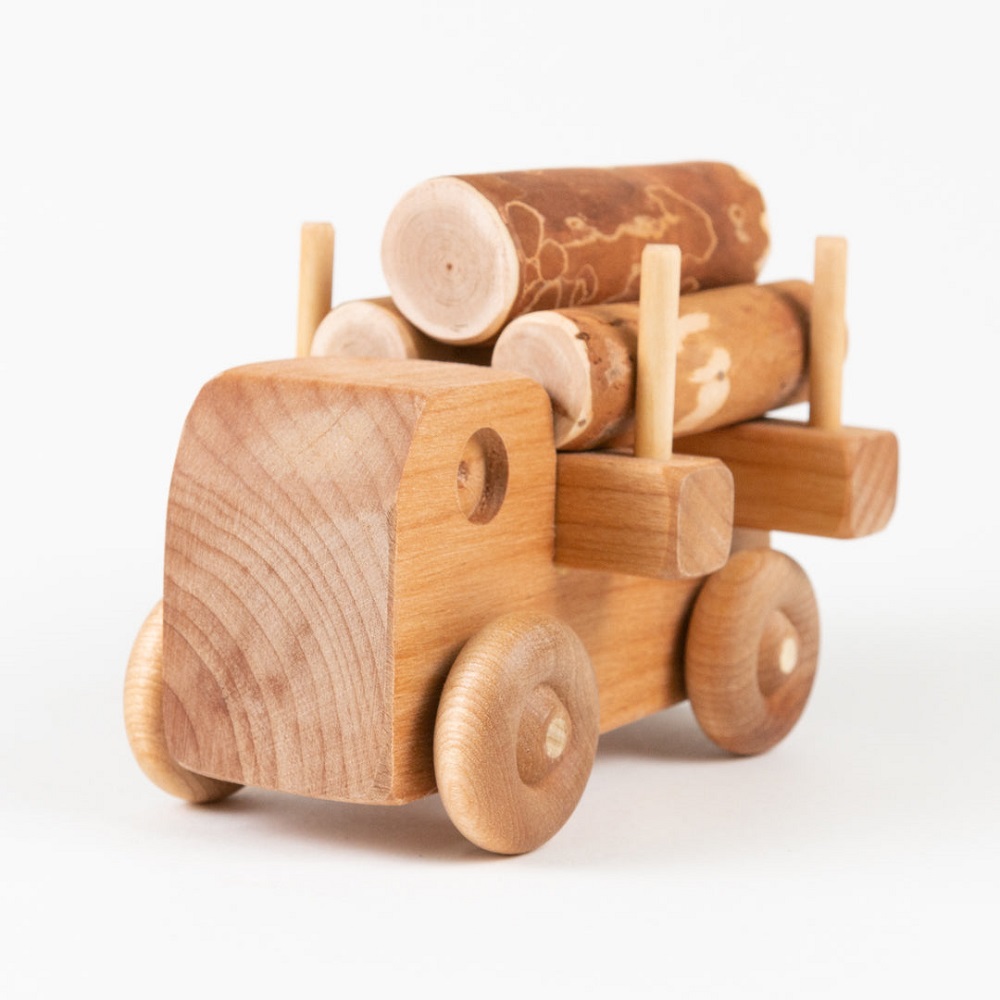
Popular Brands and Makers of Wooden Baby Toys
Finding trusted wooden toy brands ensures safety, quality, and eco-friendly options for your baby. Reputable makers prioritize the use of sustainable resources and non-toxic materials. Below are some popular choices to consider.
Trusted Brands for High-Quality Wooden Toys
- Hape Toys: Known for their durable, non-toxic wooden toys. They focus on educational and developmental designs.
- Melissa & Doug: Offers a wide range of colorful wooden toys. Their products promote creativity and learning.
- PlanToys: A sustainable brand that uses chemical-free wood. Their toys support eco-friendly practices.
- Green Toys: Combines recycled materials with high safety standards. Their wooden pieces are perfect for toddlers.
- Tender Leaf Toys: Focuses on playful designs crafted from FSC-certified wood. A great choice for eco-conscious parents.
These brands are widely available and have built trust through quality and safety.
Handmade and Artisan Wooden Toy Options
- Etsy: Offers handcrafted, unique wooden toys by independent artisans. Look for sellers using non-toxic finishes.
- Lubu Toys: Their minimalist designs are engaging and crafted with great attention to detail.
- Manzanita Kids: Specializes in heirloom-quality wooden toys. Their products are made with natural and safe materials.
- Wooden Caterpillar: This brand is ideal for Montessori-inspired toys. Their craftsmanship supports imaginative play.
- Grimm’s Wooden Toys: Famous for their rainbow stacking toys and creative designs. Ideal for sensory exploration.
Handmade wooden toys add a personal and artistic touch, often providing unique options that mass-produced brands cannot offer.
Popular brands and artisans ensure safe, sustainable, and creative playtime experiences for babies.
DIY Wooden Toys: Making Your Own at Home
Creating wooden toys for baby at home is a fulfilling and sustainable option. Homemade wooden toys allow you to customize designs, ensure safety, and add a personal touch. They also serve as affordable alternatives to store-bought toys. Below, we outline basic projects and safety guidelines to help you get started.
Simple Wooden Toy Projects for Beginners
- Wooden Blocks: Cut small wooden pieces into cube shapes. Sand edges to avoid splinters.
- Animal Shapes: Use stencils to trace animal outlines on wood. Cut and paint them safely.
- Stacking Rings: Create rings by cutting and sanding circular wooden pieces. Ensure smooth finishes.
- Wooden Cars: Build simple cars using blocks and add wooden wheels. Ensure easy rolling.
- Teething Toys: Craft teethers from non-toxic hardwood. Sand well for chewing safety.
These projects require minimal tools like sandpaper, saws, and paints. Focus on simple designs for easy crafting and safe use.
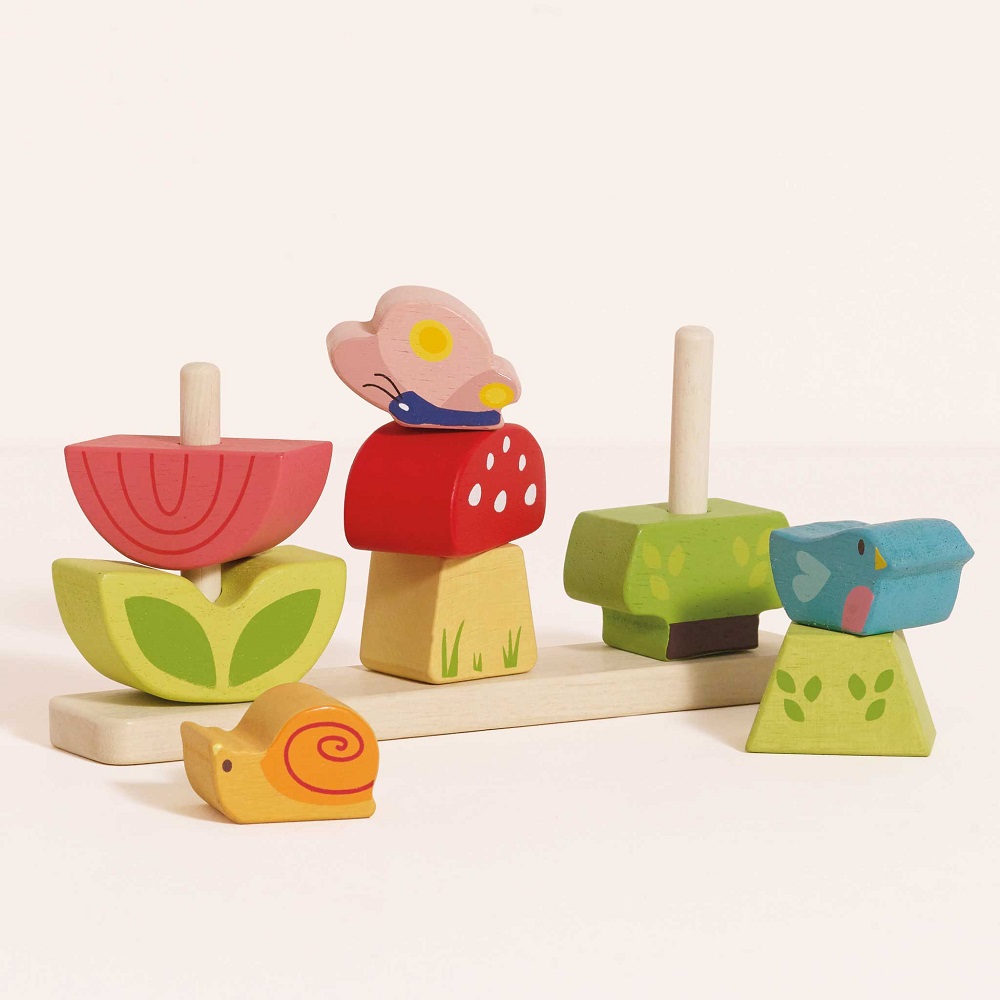
Ensuring DIY Toys Are Safe for Babies
- Use Non-Toxic Materials: Choose hardwood and non-toxic paints, glues, and finishes.
- Smooth All Surfaces: Sand every rough edge or surface to prevent splinters and cuts.
- Avoid Small Pieces: Make toys larger to eliminate choking hazards.
- Inspect Regularly: Check toys for cracks, wear, or loose parts. Repair or discard if unsafe.
- Test for Strength: Ensure toys are sturdy and do not break with moderate pressure.
Homemade wooden toys for baby combine creativity and safety. Follow these tips to ensure safe and enjoyable playtime.
Where to Buy Safe Wooden Toys for Babies
Choosing the right place to buy wooden toys for baby is essential. Reliable sources ensure that the toys are safe, durable, and made from non-toxic materials. Below, we highlight some trusted shopping options for wooden baby toys.
Online Marketplaces for Wooden Toys
- Amazon: Amazon offers a wide variety of wooden toys. You can find both branded and handmade options. User reviews help gauge the quality and safety of products. Look for items with “non-toxic” and “BPA-free” tags.
- Etsy: Etsy is great for unique, handmade wooden toys crafted by independent sellers. Many options are eco-friendly and non-toxic.
- Target: Target features affordable and branded wooden toys. Their website often highlights age recommendations and safety certifications.
- Montessori Stores: Online Montessori-focused stores specialize in safe, educational wooden toys. They often adhere to high safety standards.
- Brand Websites: Popular brands like Hape and Melissa & Doug have their own websites. Purchasing directly ensures authenticity and access to product details.
Local Stores and Eco-Friendly Shops
- Children’s Boutiques: Local baby boutiques often stock high-quality wooden toys. You can inspect and feel the toys in person for safety.
- Toy Stores: Specialty toy stores, especially educational ones, carry wooden toys from trusted brands.
- Eco-Friendly Shops: Many eco-conscious stores specifically stock sustainable wooden toys. These shops focus on environmental impact and safety.
- Farmers’ Markets: Some markets feature local artisans selling handmade wooden toys. Look for safe finishes and smooth edges.
- Home Improvement Stores: Occasionally, DIY kits for wooden toys are available for parents who want to craft at home.
When shopping, always verify the safety and material quality of wooden toys for baby. Choose stores that emphasize non-toxic, eco-friendly, and durable options for babies.
